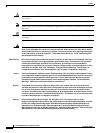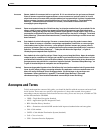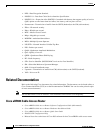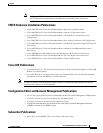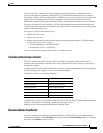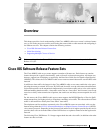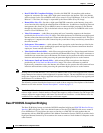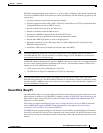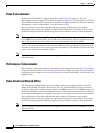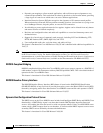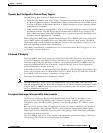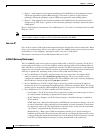
CHAPTER
1-1
Cisco uBR924 Software Configuration Guide
OL-0337-05 (8/2002)
1
Overview
This chapter provides a basic understanding of the Cisco uBR924 cable access router’s software feature
sets, as well as the processes used for provisioning the router within a cable network and configuring it
for different services. This chapter contains the following sections:
• Cisco IOS Software Release Feature Sets
• Initial Provisioning
• Supporting Multiple Classes of Service
Note This manual describes the Cisco uBR924 cable access router and feature sets as they exist in Cisco IOS
Release 12.1(5)T.
Cisco IOS Software Release Feature Sets
The Cisco uBR924 cable access router supports a number of feature sets. Each feature set contains
features that provide a specific functionality, such as firewall or advanced encryption. All feature sets,
however, support base IP bridging as required by the Data Over Cable Service Interface Specification
(DOCSIS). This allows the Cisco uBR924 cable access router to transmit data traffic over the HFC cable
network.
In addition to data traffic, the images for the Cisco uBR924 cable access router enable the voice ports,
allowing the router to transmit Voice over IP (VoIP) and fax traffic over the cable network and Internet.
Voice and data traffic can be transmitted simultaneously, but real-time traffic such as voice calls requires
different handling than data traffic—data traffic can be sent on a “best-effort” basis because it can accept
some loss or delay in the transmission of packets, but such losses and delays are unacceptable for voice
calls.
For this reason, the Cisco uBR924 cable access router supports the DOCSIS Quality of Service (QoS)
enhancements that give higher priority to IP packets containing voice traffic. This ensures that real-time
traffic is delivered more reliably than “best-effort” data traffic.
The telephones and fax machines connected to the Cisco uBR924 router can route their calls over the
Internet using either the H.323v2 (Gateway/Gatekeeper) or Simple Gateway Control Protocol (SGCP)
voice control protocols. Depending on the protocol used and the level of support provided by the service
provider, these calls can be made either to other VoIP devices or to phones connected on the regular telco
network.
The following Cisco IOS Release 12.1 images support both data and voice traffic, in addition to the other
feature sets that are listed:




